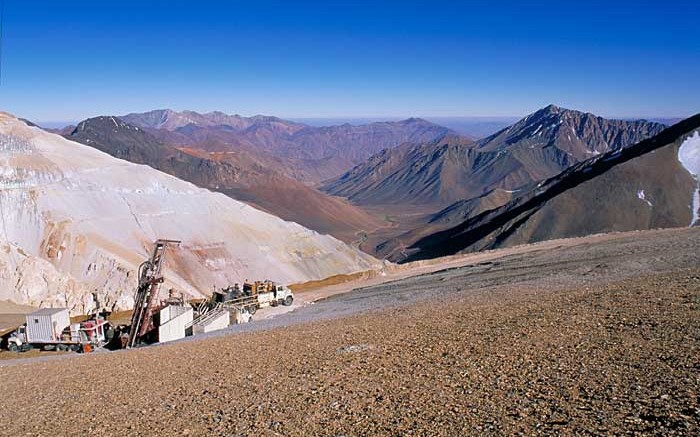VANCOUVER — Chile’s environmental regulator has imposed its maximum fine on the world’s largest gold miner after a four-month investigation revealed Barrick Gold (ABX-T, ABX-N) committed “very serious” violations of its environmental permits for the troubled Pascua-Lama gold mega-project. The regulator resolved that the project would remain halted until all 23 violations are fixed.
The US$8.5-billion project straddles the Chilean-Argentine border, with much of the mine in Chile and most of the processing facilities planned for Argentina. Construction began almost four years ago, but work on the Chilean side was halted in April after local indigenous groups filed complaints over alleged groundwater contamination. A subsequent court ruling cited unacceptable concentrations of arsenic, aluminum, copper and sulphates in groundwater.
Now Chile’s Environmental Superintendent — or Superintendencia del Medio Ambiente (SMA) — says Barrick failed to build some of the water-containment systems it promised. On top of that, the regulator says Barrick hasn’t explained what it has done wrong.
“We found that the acts described weren’t correct, truthful or provable,” said Environmental Superintendent Juan Carlos Monckeberg. “And there were other failures of Pascua-Lama’s environmental permit as well.”
Monckeberg says Barrick reported some of the failures itself, but an investigation conducted by agency inspectors found the company was not telling the whole story about its inadequate water systems.
The discovery prompted the national regulator to impose a US$16-million fine — its largest possible sanction under Chilean law and the regulator’s first fine after gaining enforcement powers six months ago. The SMA also passed a resolution that requires Barrick to bring Pascua-Lama into accordance with its environmental permit before construction can resume.
The regulator estimates it could take two years to build the needed water systems, though Barrick has not yet commented on how the fixes will impact the timeline to production. The miner only said that “the company is reviewing the SMA regulation in detail . . . Barrick is fully committed to complying with all aspects of the resolution and operating at the highest environmental standards.”
Chilean President Sebastian Pinera addressed the situation at a press conference with Prime Minister Stephen Harper a few days later during a state visit to Ottawa.
“The company didn’t comply with all the conditions that were established in that environmental impact assessment,” Pinera said. “We identified twenty-three areas where they will have to improve their behaviour with respect to the environment in Chile.”
Pinera noted that the Chilean government wants Barrick to proceed with Pascua-Lama, as long as it obeys environmental rules, calling the mine an “important” investment.
The SMA says violations at Pascua-Lama include failing to build contaminated-water containment structures before mine construction began; failing to keep the SMA informed about problems and changes; and failing to provide data sought by inspectors.
For example, Barrick did not build a canal to divert rainwater from piles of waste rock. Such a canal would have minimized the acid runoff that such rock can generate, which is why it was a fundamental part of the Pascua-Lama environmental permit.
When Barrick announced that construction at Chile would be suspended in April, the company noted that development work would continue on the Argentine side of the project. Barrick made no change to that stance in response to the fine.
Obtaining permits from Argentina — where mining is regulated primarily at the provincial level — has generally proven easier for Barrick than achieving authorization in Chile, where mine permits are a federal concern.
That being said, the Argentine process was not without its challenges. Barrick and other pro-mining groups fought for and won blockage of a national glacier protection law in 2010 that would have impacted Pascua-Lama.
More generally, the SMA fine is the latest in a series of setbacks and challenges for Barrick at Pascua-Lama. Costs to build the mine have ballooned from an initial US$3-billion estimate to the current expectation of US$8.5 billion. Production has been delayed several times, with initial output now planned for the second half of 2014.
Once it reaches production, Pascua-Lama is expected to produce 800,000 to 850,000 oz. gold annually for the first five years. Cash costs at the operation are also forecast to be among the lowest in the world, potentially coming in at less than US$100 per oz.
After the fine news, Barrick’s shares resumed trading 90 minutes before markets closed, losing 43¢ to close at $19.69, not far above the 52-week low of $17.98. Barrick’s 52-week high is $44.75, and the major has 1.00 billion shares outstanding.


This puts in doubt other projects that currently underway in how Barrick conforms to the environmental regulations & why they did not conform to Pascua-lama project.Shame on you.